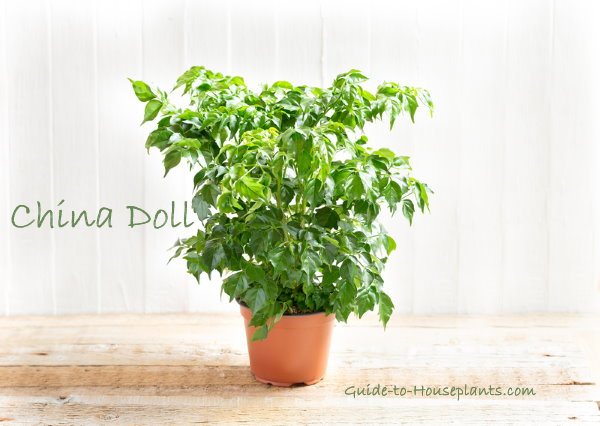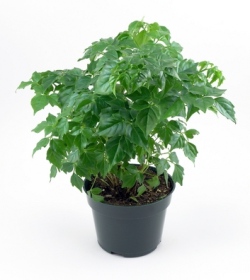China Doll Plant
Botanical Name: Radermachera sinica
China Doll plant is fairly new as a house plant. Introduced to garden centers in the 1980s, it quickly became popular because of its tolerance to the warm, dry air of heated homes.
It's still in favor -- and it's easy to see why. Lush, emerald-green canopy of leaves cover this tropical beauty year-round.
If you're adding one to your collection (and you should) look for plants with stems that are covered with leaves from top to bottom. Skip a leggy plant -- a sure sign of neglect. Don't be afraid to buy a small plant, this one grows fast.
 Radermachera sinica makes an easy-care houseplant. Photo © Tatyana Abramovich
Radermachera sinica makes an easy-care houseplant. Photo © Tatyana AbramovichGet to Know China Doll Plant
A small, evergreen shrub, it has long, bipinnate leaves with glossy, deeply veined leaflets that are about 2 in (5 cm) long.
Young plants are compact with branching, woody stems that reach about 2-ft (60 cm) long. Fast-growing, this plant will quickly become leggy if not pruned back.
Pruning China Doll will keep the plant compact and beautiful. Cut off as much as you need to in spring and summer.
Pruning tip: Always prune above a leaf node (the place where a leaf is attached to the main stem). Use sharp pruning shears to avoid tearing the woody stems. Also, pinch off growing tips regularly to encourage the stems to branch out.
Will China Doll bloom? Don't bet on it. In its native habitat of subtropical Southeast Asia, mature plants will produce fragrant, yellow bell-shaped flowers. However, China Doll Plants grown indoors rarely flower.
Yellow leaves? The keys to success with this China Doll house plant are plenty of bright, indirect light and consistently moist soil. Yellowing leaves usually mean it has been overwatered.
Something bugging your plant? Look over your houseplant for whiteflies, mealybugs and scale insects. Isolate an infested plant and treat it right away.
Dropped leaves on China Doll are usually caused by changes in light, water or temperature. If you just brought your new houseplant home, you may see a lot of leaves falling from it. Don't worry -- it's simply adjusting to its new environment. Radermachera sinica is a vigorous grower and will soon grow new leaves. Cut off any bare stems, if you want.
Repot in spring, only when its roots have filled the pot. Use a container with drainage holes to prevent soggy soil. If you want to cover up a plain nursery pot, you can slip it into a cachepot -- a decorative container without drainage holes. I put pebbles in the bottom of cachepots to keep the pot above the drainage water.
China Doll Plant Care Tips

Origin: China and Taiwan
Height: Up to 4 ft (1.2 m) indoors
Light: Bright, indirect sunlight
Water: Keep soil evenly moist year-round. Don't allow the soil to become soggy -- or dry out. Either condition will cause the China Doll plant to drop its leaves. Resist the temptation to over-water, which makes the problem worse. Yellow leaves are also a symptom of over-watering.
Humidity: Try to maintain at least 40% relative humidity around your plant. Indoor air can become extremely dry in winter; it's a good idea to use a humidity monitor rather than guess. Use a humidity tray or a cool-mist room humidifier, if needed.
Temperature: Average room temperatures 65-75°F/18-24°C. It will tolerate a minimum of 50°F/10°C.
Soil: Peat moss based mix with added vermiculite or perlite, such as African violet potting mix.
Fertilizer: Feed China Doll Plant every 2 weeks spring through fall with balanced (such as 10-10-10 N-P-K) water-soluble fertilizer diluted by half.
Propagation: Take 4 in (10 cm) stem tip cuttings in spring or summer. Cut off lower leaves from the stem; use sharp pruners to cut them cleanly just above a leaf node (the place where a leaf is attached to the stem). For best results, dip the cut stem tip in rooting hormone powder before planting. Insert the cutting into moist potting medium.

